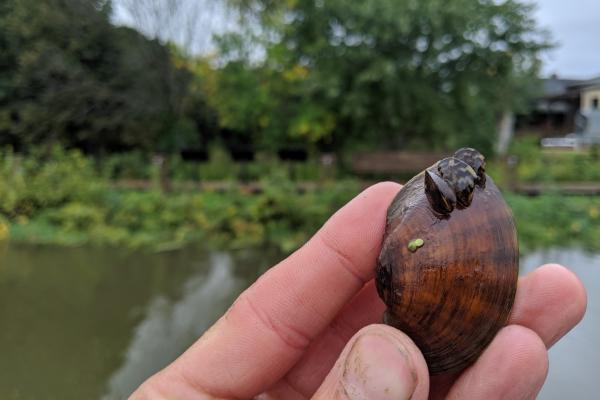Florida Reef Tract
When you think of the Florida coast and the Gulf of Mexico, do you picture its beautiful clear waters and fantastic beaches? Lying just under the surface of southern Florida's waters is an entire ecosystem called the Florida Reef Tract. A popular snorkeling destination, and the world's third-largest barrier reef, the Florida Reef Tract is facing an unprecedented disease outbreak.
Wyoming Toad
The population of Wyoming Toads declined dramatically in the 1970s, and by the 1980s, the toads were extremely rare. The Wyoming Toad was listed in the Endangered Species Act on January 17, 1984. In December 1996, the Association of Zoos and Aquariums (AZA) approved a Species Survival Plan® (SSP) for the Wyoming Toad.

Mussels
Freshwater mussels are considered the most imperiled group of animals in North America, with more than 70% of nearly 300 species either threatened or endangered or already extinct.
Conservation Partnerships
Seafood Watch
The Museum & Aquarium and our local Hy-Vee supermarkets partner with Monterey Bay Aquarium’s Seafood Watch Program to use guidelines they’ve formulated based on scientific research to better assist us in our efforts to be seafood sustainable.
Seafood sustainability is the practice and management of harvesting or producing seafood with minimal impact to the environment. The Museum & Aquarium practices seafood sustainability when purchasing food for animals in our care. We also encourage visitors to the museum to participate in the program as well through face-to-face engagement and education. Seafood Watch pocket guides are available to guests free of charge at our box offices and can help visitors make informed decisions on their next seafood purchase.
Citizen Science
Citizen science is research conducted, in whole or in part, by you, your neighbor, your grandparents, or anyone considered an amateur or nonprofessional scientist. Through citizen science projects, individuals, groups, and families are provided a fun opportunity to learn about a living thing and its environment, collect data, and report the data collected for use by nonprofessional and professional scientists all over the world. As a citizen scientist, you make a valuable contribution and become part of the scientific community. The Museum & Aquarium encourages participation in the following citizen science programs! Learn more about some of these programs below!
FrogWatch USA
FrogWatch USA is a citizen science program of the AZA and provides participants an opportunity to learn about wetlands in their communities. Volunteers collect data during evenings from February through August annually and have been submitting data for over 15 years.
Project Piaba
The mission of Project Piaba is to increase the environmental, animal welfare, and social sustainability of the Amazonian aquarium fish trade, to develop and incorporate metrics through which this progress can be assessed, and to provide mechanisms to promote this industry.
The National Mississippi River Museum & Aquarium has partnered with Project Piaba to create awareness among our visitors about how they can participate in this important work.
Where to find on campus: Second floor of the National River Center next to the conservation Lab.
Monarch SAFE
Our monarch vision is that native, pollinator-friendly plantings become the norm in gardens, throughout cities, and within farmlands. This will create a conservation corridor between Canada and Mexico, leading to annual celebrations of monarch migrations and the comeback of this amazing species.
SAFE stands for Saving Animals From Extinction. The purpose of SAFE programs is to bring groups of AZA members together with field-based partners to enhance the probability of conservation success for threatened species or a group of related taxa in the wild. SAFE species programs help AZA-accredited zoos and aquariums do more conservation in a better way.
Specifically, SAFE species programs:
- Protect threatened animals in the wild
- Build on established recovery plans and track records of commitment
- Prioritize collaboration among AZA member institutions and field-based partners
- Implement both strategic conservation and public engagement activities
- Measure and report real conservation
Join us and all of our partners across the country by:
- Promoting wildlife-friendly landscaping at your homes to help feed the migration
- Pledging to reduce pesticide use on your properties
- Choosing native species in your landscaping such as native milkweed instead of tropical milkweed
- Converting turf to wildflower milkweed meadows
- Enjoying watching wild monarchs instead of rearing them indoors
- Sharing your monarch sightings with community scientists
- Encouraging others to rethink what it means and looks like to have a healthy, attractive yard
Learn more about how you can become a steward in your own backyard by visiting and participating in our partners' programs below.
